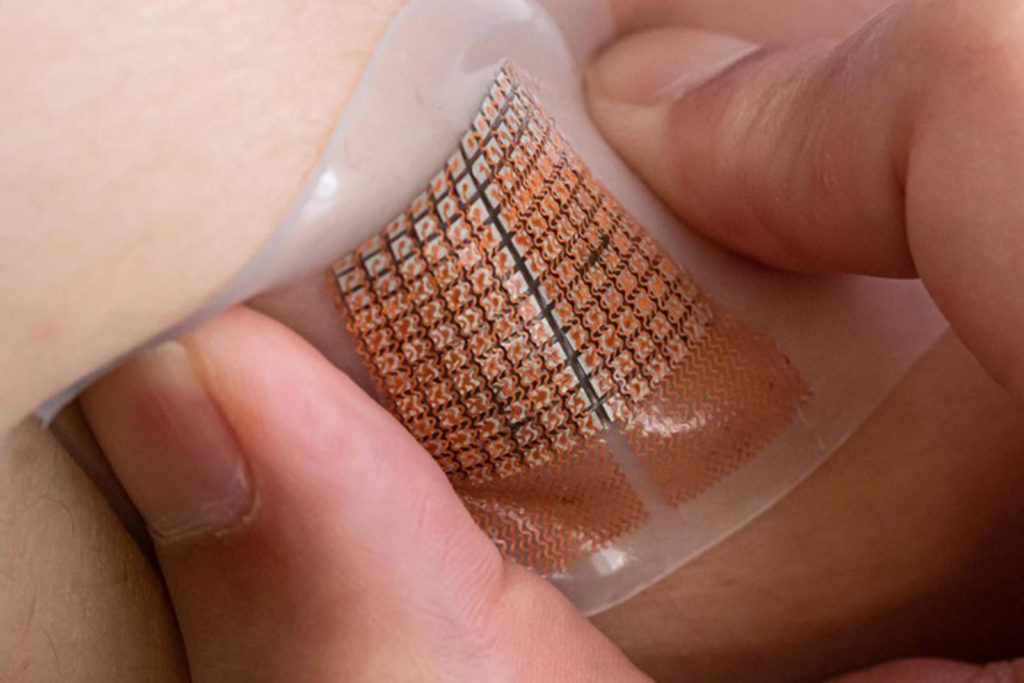
A skin patch that sends ultrasound pulses into the wearer’s body has been developed that could offer an early warning system for cardiovascular problems. It is generally accepted that the earlier someone receives care for a heart attack or stroke, the better the chances for recovery.
Newatlas.com reports that the device, created at the University of California-San Diego by a team led by Prof. Sheng Xu, builds on a previously developed device to provide that crucial early indication of cardiovascular trouble. The patch, worn on the neck or chest, consists of a thin sheet of flexible, stretchable polymer, with a 12-by-12 grid of millimeter-sized ultrasound transducers inside. It is currently hard-wired to a computer and power source, but eventually, it will be a self-contained and wireless device.
In one operational mode, all the transducers can be set to transmit ultrasound wave pulses at the same time. This produces an ultrasound beam that focuses directly down onto one area of the body, up to 14 cm (5.5 in) beneath the skin.In the other mode, the transducers transmit their waves out of sync with one another, but still rapidly enough that they form one cohesive beam. In this case, however, that beam can be pointed in different angles, as opposed to just straight down from the patch, so that different areas could be scanned without having to stick the patch right above each one.
The device is able to continuously monitor the wearer’s blow flow, blood pressure and heart function in real time, which could determine if cardiovascular problems are beginning to occur. When tested, the patch was shown to perform on par with traditional handheld ultrasound probes that require a trained technician in a clinic. However, results vary depending on the skills of the technician. This variable is eliminated with the patch, making simple, continuous, at-home monitoring possible.
The paper was published in the journal Nature Biomedical Engineering.
 TEXTILES.ORG
TEXTILES.ORG


